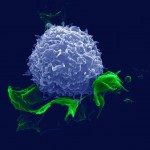Lien vers Pubmed [PMID] – 11910986
Gastroenterol. Clin. Biol. 2001 Dec;25(12):1061-6
OBJECTIVES: The aim of this observational study in patients with chronic hepatitis C and treated with interferon alpha-2a was to assess 1) monitoring in everyday practice, 2) the acceptability of treatment and 3) the intensity of fatigue.
METHODS: Three hundred and fifty four patients were enrolled by physicians in both teaching and general hospitals, or private practice. Before treatment, clinical, epidemiological, and virological data were collected as well as a self-evaluation of fatigue using a visual analogic scale. Clinical follow-up was assessed every 3 months during treatment and 6 months after the end of treatment and included an evaluation of fatigue and the number of workdays missed due to sickness.
RESULTS: Two hundred and nineteen men and 135 women, mean age 45 +/- 13, were included. The epidemiological, histological and virological features of this group were similar to those patients usually treated for chronic hepatitis C. Before treatment, the mean measurement of fatigue was 41 on a scale from 0 (perfect form) to 100 (exhausted). Fatigue was unrelated to age, source of infection, biological activity, or histological score. It worsened in patients who stopped interferon after 3 or 6 months, but was stable in patients who continued treatment for 12 months. Fatigue decreased after the end of treatment and was unrelated to treatment response. The need to stop work was strongly related to the intensity of fatigue and the number of workdays missed due to sickness represented nearly two months out of three in 25% of active patients during the first quarter and in 15% of patients thereafter. 61% of patients self-injected interferon (mainly previous drug users) whereas 30% of patients used nurse care throughout treatment.
CONCLUSION: This study not only provides a realistic evaluation of fatigue in patients with chronic hepatitis C, before, during and after treatment, but also highlights its social and economic consequences. It shows the need for further cost-effectiveness studies on new therapeutic strategies using combined treatments.

